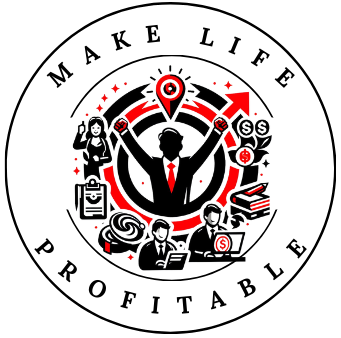
Affiliate marketing can seem a bit tricky when you’re just starting out, but getting real basic can demystify it quickly. At its core, affiliate marketing is all about partnerships. Here, affiliates (that’s you) promote products for merchants (stores or companies) and earn a commission for every sale made through your unique referral link.
The dynamics are pretty straightforward. You, as an affiliate, promote a product via blogs, social media, or other channels. When someone clicks on your referral link and makes a purchase, the merchant pays you a commission. It’s like being a digital salesperson, but you get to choose what products to promote. It’s flexible and can be lucrative if done right.
Honestly, I was clueless when I started out. I knew I wanted to write and try to make money online. I listened to the gurus who made it sound like it would be so easy I’d be “making money in my sleep.”
There’s a bit more to it than that.
Three key players drive this ecosystem: merchants, affiliates, and consumers. Merchants create and sell products. Affiliates promote these products to their audience. Consumers, the final piece, buy the products. Simple enough, right? Each plays a critical part in the process, creating a symbiotic relationship that benefits everyone.
But how do you get your website in front of potential buyers? That’s the tricky part.
To illustrate this, think about that fitness blogger you follow. They might promote protein powders or workout gear with links in their posts. When you click one of those links to buy the product, the blogger earns a commission. This is a classic example of affiliate marketing in action.
Getting started might feel overwhelming, but the basics are straightforward. As long as you have a clear understanding of your role and how you can effectively collaborate with merchants, you’re on the right path.
Getting Started with Affiliate Marketing

Picking the right niche is your first big decision. You want something that interests you and has a demand. Think about what you love, whether it’s tech gadgets, fitness gear, or travel accessories. Your passion will drive better content, and a genuine interest resonates well with your audience.
Maybe you like rock collecting or canning foods at home. Whatever you like, there is probably a market for it. Just be sure it’s something you feel that you can write about for a good long time!
Once you’ve nailed down your niche, it’s time to join affiliate programs and networks. There are tons of options out there like Amazon Associates, ShareASale, and CJ Affiliate. These platforms connect you with merchants who are looking for affiliates just like you. Look for programs that offer good commissions and have products that align with your chosen niche.
Creating valuable content is where the magic happens. Your goal is to provide useful, engaging, and relevant information to your audience. This could be through blog posts, videos, or social media updates. Forget pushy sales tactics; focus on helping your readers solve problems, discover new products, or learn something useful.
Promotion is key. Strategically placing your affiliate links within your content is crucial. That could be through product reviews, how-to guides, or comparison articles. Make sure your links are naturally integrated into your content to maintain credibility and trust with your audience. Being upfront about using affiliate links helps build trust too.
Maximizing Your Earnings in Affiliate Marketing

Analyzing performance metrics is your friend here. Keeping track of clicks, conversion rates, and commissions earned helps you understand what’s working and what’s not. Use analytics tools provided by affiliate programs or third-party options to get detailed insights.
But let me tell you a little secret—do NOT obsess with these things. You could end up spending more time checking your analytics than you do creating great product matches to write or vlog about.
Optimization is the name of the game. If a specific type of content is performing well, create more of it. Experiment with different kinds of promotions—like email campaigns, social media posts, or even paid ads—to find what gets the best results. Always be testing and tweaking your strategies for better results.
SEO, or search engine optimization, is something you can’t ignore. Utilizing effective keywords, writing quality content, and building backlinks to your site can drive organic traffic. Higher traffic means more potential clicks on your affiliate links. Even basic SEO knowledge can make a big difference.
Don’t sleep on the power of social media. Platforms like Instagram, TikTok, and YouTube are goldmines for reaching wider audiences. Share your affiliate content there, use hashtags, engage with your followers, and create engaging stories or posts. Influencers do it for a reason—it works.
Right now over half of my traffic comes from social media. Use it, it really does work!

I learned most of what I know about affiliate marketing from being a member of Wealthy Affiliate. Check it out today! It will not cost you a dime to see if it might be something you could use to make you a success!

